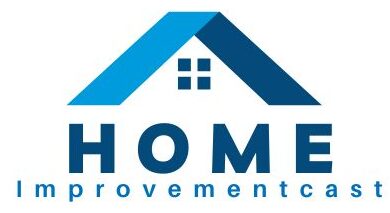When it comes to buying or selling a property, emotions often run high. For buyers, it’s about finding the perfect home, while for sellers, it’s about maximizing the value of their property. In this emotionally charged environment, real estate agents and sellers often use persuasive language to make properties more appealing. This is where the concept of house puffing comes into play.
So, what is house puffing in real estate? Simply put, house puffing refers to the use of exaggerated or subjective statements to promote a property. These statements are often designed to evoke an emotional response rather than provide factual information. For example, phrases like “the best house on the block” or “a dream home” are typical examples of puffing.
While puffing is generally legal, it can significantly influence property deals and buyer decisions. Buyers may develop unrealistic expectations, while sellers might unintentionally cross ethical or legal boundaries.
Understanding House Puffing in Real Estate

Definition and Explanation
At its core, house puffing is a marketing tactic used to make a property seem more desirable. It involves subjective or exaggerated statements that are not necessarily factual but are neither outright lies nor entirely accurate. For instance, calling a house “a cozy retreat” or “perfect for families” might sound appealing, but these descriptions are open to interpretation.
The key difference between puffing and factual representation lies in the claims. Factual representation involves verifiable details, such as the square footage of a house or the number of bedrooms. Puffing, on the other hand, relies on opinions or subjective descriptions.
Why Puffing Happens
Puffing is a standard marketing strategy in real estate because it appeals to buyers’ emotions. A buyer might be drawn to a property described as “a hidden gem” or “a once-in-a-lifetime opportunity,” even if these claims are subjective. The goal is to create a sense of urgency or excitement that encourages buyers to act quickly.
However, puffing walks a fine line between emotional appeal and misleading representation. While it’s legal to use puffing as a marketing tool, it must not cross into misrepresentation or fraud.
Legal Status of Puffing
Legally, puffing is considered acceptable in most jurisdictions as long as it doesn’t involve false claims or deceptive practices. For example, saying a house has “great potential” is puffing, but claiming it has a new roof when it doesn’t would be misrepresentation.
Puffing vs. Misrepresentation vs. Fraud
It’s important to distinguish between puffing, misrepresentation, and fraud:
- Puffing: Subjective opinions or exaggerations (e.g., “the best view in town”).
- Misrepresentation: False statements about material facts (e.g., claiming a house has central air when it doesn’t).
- Fraud: Intentional deception to gain an unfair advantage (e.g., hiding structural issues).
Understanding these distinctions can help buyers and sellers navigate property deals more confidently.
Common Examples of House Puffing in Property Deals
Typical Puffing Phrases in Listings and Sales
Real estate listings are often filled with puffing phrases. Here are some common examples:
- “Gorgeous pool” (when the pool is small or outdated)
- “Unbeatable location” (without providing evidence)
- “One-of-a-kind property” (a subjective claim)
- “Paradise garden” (may not reflect the actual condition)
These phrases are designed to capture attention but may not provide an accurate picture of the property.
How Agents and Sellers Use Puffing
Real estate agents and sellers often use puffing to highlight a property’s potential rather than its current state. For example, they might describe a fixer-upper as “a great investment opportunity” or emphasize the “charm” of an older home.
Visual and Verbal Puffing
Puffing isn’t limited to words. Visual tactics, such as staging homes with rented furniture or using wide-angle lenses in photos, can also create an illusion of value. During property tours, agents might use verbal puffing to emphasize subjective qualities like “warmth” or “character.”
Buyer’s Perspective: Spotting Puffing
As a buyer, it’s essential to approach property descriptions and tours with a critical eye. Look for discrepancies between marketing claims and the actual condition of the property.
The Impact of House Puffing on Buyers and Sellers

Risks for Buyers
For buyers, puffing can lead to unrealistic expectations. A property described as “move-in ready” might require significant repairs, resulting in financial loss and disappointment. This is why independent verification, such as inspections and appraisals, is crucial.
Risks for Sellers
Sellers who rely too heavily on puffing risk damaging their reputation. If buyers feel misled, it can lead to disputes or even legal action. Ethical marketing practices are crucial for maintaining trust and credibility.
How Puffing Affects Negotiations
Puffing can influence negotiations by creating an emotional connection between buyers and the property. However, it can also lead to disputes if buyers feel the property doesn’t live up to its description.
How to Identify Puffing in Real Estate Deals: Practical Tips for Buyers
Critical Evaluation of Property Descriptions
When reviewing property listings, question subjective claims. For example, if a house is described as having a “spacious backyard,” ask for the exact dimensions.
Research and Due Diligence
Conduct thorough research using public records, property history, and market comparisons. Hiring professional inspectors and appraisers can provide an objective assessment of the property’s condition.
Ask Direct Questions
Don’t hesitate to ask agents or sellers for evidence supporting their claims. For instance, if a house is described as “energy-efficient,” request documentation of recent upgrades.
Watch for Red Flags
During property visits, look for signs of staging or concealment. For example, fresh paint might be hiding water damage.
Leverage Technology
Utilize online tools such as virtual tours, drone footage, and neighborhood analytics to gain a comprehensive understanding of the property.
Legal and Ethical Boundaries Surrounding Puffing in Real Estate
Legal Framework
Real estate laws require truthful advertising and disclosure. Puffing is legal as long as it doesn’t involve false claims.
Ethical Standards
Real estate professionals are required to provide accurate and honest information. Ethical marketing practices foster trust and safeguard the interests of both buyers and sellers.
Consequences of Crossing Boundaries
Sellers and agents who engage in deceptive practices risk lawsuits, fines, and license revocation.
Best Practices for Sellers and Agents to Avoid Puffing Pitfalls
Honest Marketing Strategies
Focus on factual features and verified benefits. For example, instead of saying “amazing views,” provide photos or descriptions of the view.
Building Trust
Transparency about the property’s condition and history fosters trust and confidence. Encourage buyers to conduct inspections and ask questions.
Avoiding Exaggeration
Stick to objective selling points and avoid subjective claims. Training and ethical guidelines can help agents navigate this balance.

